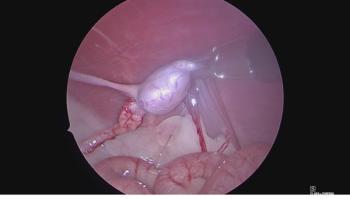
Central Amygdala Neurons Control Predatory Hunting in Jawed Vertebrates
The central nucleus of the amygdala acts as a control center to mediate efficient predatory hunting behavior in jawed vertebrates.
The central nucleus of the amygdala (CeA) plays an important role in controlling predatory hunting behaviors (capturing, subduing, and biting prey) in jawed vertebrates, according to a study recently published in Cell.
The development of articulated jaws marked a significant evolutionary event for vertebrates, enabling jawed predators to reach the top of the food chain. When vertebrate head morphology transitioned to support active predation, neuronal networks also developed to control craniofacial and locomotor systems needed for active hunting. Previous studies have reported CeA activation resulting from predatory hunting and the identification of CeA neuronal projections to brainstem circuits controlling craniofacial muscles.
Study authors used 176 adult male mice, aged 8 to 20 weeks, from six mice strains. All mice were habituated to hunting live crickets. Optogenetic and chemogenetic stimulation of the CeA were conducted to evaluate predatory hunting behaviors, which were recorded using a video recorder with a high-speed camera. The authors performed stereotaxic surgery to inject the viral constructs and implant the optical fibers used for optogenetic stimulation. Chemogenetic stimulation was performed with an intraperitoneal injection of clozapine.
Using a laser, the authors first performed optogenetic stimulation of the CeA. This stimulation shortened the amount of time needed to capture and subdue live prey. Mice also captured and subdued artificial prey (battery-powered robot) when the CeA was optogenetically stimulated. Chemogenetic stimulation with clozapine corroborated optogenetic stimulation results.
Masseter muscle and CeA neuronal activity were monitored during optogenetic stimulation of the CeA. Electromyography revealed transient increases in masseter muscle activity during bite deliveries. Neuronal activity also increased, as demonstrated by the increased activity of capture-excited CeA neurons just before mice attempted to capture the prey; hunting-excited CeA neurons remained active as mice hunted the prey.
Optogenetic stimulation did not lead to attacks on other mice. Neither form of stimulation increased food intake or induced anxiogenic behavior.
The authors identified a neuronal projection from the CeA to the parvocellular reticular formation (PCRt), which is in the brainstem and contains inhibitory and excitatory craniofacial premotor neurons. Optogenetic stimulation of this projection interrupted locomotor activity and initiated fictive feeding behavior (sitting back on haunches, bringing elbows in periodically, making chewing movements), despite no food being present. Electromyography revealed suppression of masseter and trapezius muscle activity when clozapine was administered following optogenetic stimulation. With clozapine, mice lost their ability to deliver killing bites after capturing and subduing prey.
The authors also identified neuronal projections from the CeA to the periaqueductal gray matter (PAG), which is located in the midbrain and has demonstrated a role in predation. Optogenetic stimulation of this projection enhanced predatory behavior by significantly increasing hunting speed and decreasing overall time to hunt. Unlike the CeA→PCRt pathway, optogenetic stimulation of the CeA→PAG pathway did not induce fictive feeding behavior.
After activating the pathways separately, the authors activated them simultaneously. Simultaneous activation led to robust predatory hunting behavior with live and artificial prey.
Induced pathway lesions revealed notable dysfunctions in predatory behavior. For example, CeA→PCRt pathway lesions prevented mice from capturing prey with their jaws. CeA→PAG pathway lesions markedly increased the time needed to begin the hunt.
Taken together, study results indicated clear functions of the CeA’s projections to the PCRt and PAG:
- The CeA→PCRt pathway controls predatory biting behavior.
- The CeA→PAG pathway controls locomotor activity needed for predation.
Dr. Pendergrass received her doctorate in veterinary medicine from the Virginia-Maryland College of Veterinary Medicine. Following veterinary school, she completed a postdoctoral fellowship at Emory University’s Yerkes National Primate Research Center. Dr. Pendergrass is the founder and owner of JPen Communications, LLC.
Newsletter
From exam room tips to practice management insights, get trusted veterinary news delivered straight to your inbox—subscribe to dvm360.




